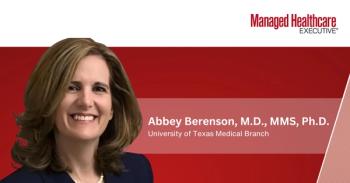
Healthcare organizations that struggle most with interoperability
The landscape of data exchange efficiency continues to be uneven, with some healthcare organizations communicating more proficiently than others. These are the ones struggling the most.
The landscape of data exchange efficiency continues to be uneven, with some healthcare organizations communicating more proficiently than others.
“In some markets, the hospitals have been early adopters but the health plans are later to the game,” says Laura Young, interim executive director of the Alaska eHealth Network and interoperability strategist with Converge Health Information Solutions. “Many health plans have attempted to start their own health information exchange (HIE) efforts only to realize some of the insurance regulations make it difficult for them to act as health information organizations.”
Young says many health plans are also still struggling to get up to speed with information exchange. “Health plans are often sharing claims data that can be 30 days or older,” she says, adding that medication history is one of the most important records that needs to be complete and easy to share with providers.
Because behavioral healthcare and long-term post-acute care organizations aren’t eligible for meaningful use incentives, they tend to be the slowest players when it comes to exchanging information, Young says.
“As many as 50% of those providers are still on paper or uncertified systems,” she says, adding that other regulations that aim to protect patient privacy continue to make interoperability a challenge. “The complexities with exchanging 42 CFR Part 2 Substance Abuse data is an additional challenge as organizations must have the ability to explicitly opt-in patients.”
Rural providers, who may have less funding to pursue IT initiatives, also struggle with interoperability. Yet they might actually be the entities that would benefit most from seamless information exchange.
“Utilizing health IT has benefits for rural providers and patients alike. For example, patients can exchange secure messages, have e-visits with their physicians, and decrease the hassle of traveling to a specialist, says Rene S. Cabral-Daniels, JD, MPH, CEO of Community Care Network of Virginia, Inc.,
Customized approach necessary
In order to remedy interoperability constraints, Young suggests that healthcare organizations have to be specific about their data exchange needs, and not accept a “one-size-fits-all” approach.
They should seek out solutions that can “meet them where they are” in terms of their technology, level of proficiency, and business needs, Young says, adding that determining whether to hire a consultant or add these tasks to the workload of current staff is among the first steps.
“Interoperability efforts have matured and there are a number of experienced consultants that will know how to optimize the time it takes to build out the solution as well as provide subject matter expertise around data-sharing agreements, and onboarding/work flow,” Young says. “However, supporting the solutions can be easier to support with in-house resources, especially from a long-term perspective.”
On the provider side, Young says that providers need to realize that prioritizing data exchange is makes for better business.
“Providers sometimes do not want to share data with each other because they fear a competing provider may market to the other provider’s patient,” Young says.
She says that providers need to evaluate their work flow and apply the appropriate tools that will add the most value in house and to patients.
“It is not enough to sign them up and hope they will use an HIE or other tool. It must be effectively inserted in the work flow and the provider has to be a true stakeholder in the process.”
Newsletter
Get the latest industry news, event updates, and more from Managed healthcare Executive.



















































